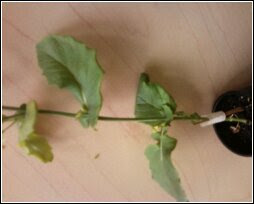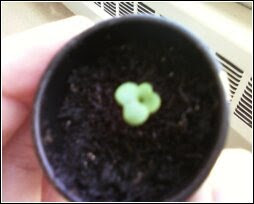
Over the last week or so, there has been a huge development in my plant, growing from the previous 4.5cm to 13cm as of today. Along with the massive increase in height, my plant has began to flower beautifully, with several axillary buds still in the process of blooming into additional flowers.
The leaves of my plant still resemble the shape of an Oak trees leaves, growing larger each day to absorb more sunlight for energy. My plant is now starting to form cotyledons which will eventually start to wither throughout the end of it's life cycle.
It was a necessity to pluck off the several axillary buds to conserve the plants energy and allow it to live longer. Today was also the day that cross pollination started, by gluing a dead bee to a skewer and transferring the pollen from another plant onto my plant.














